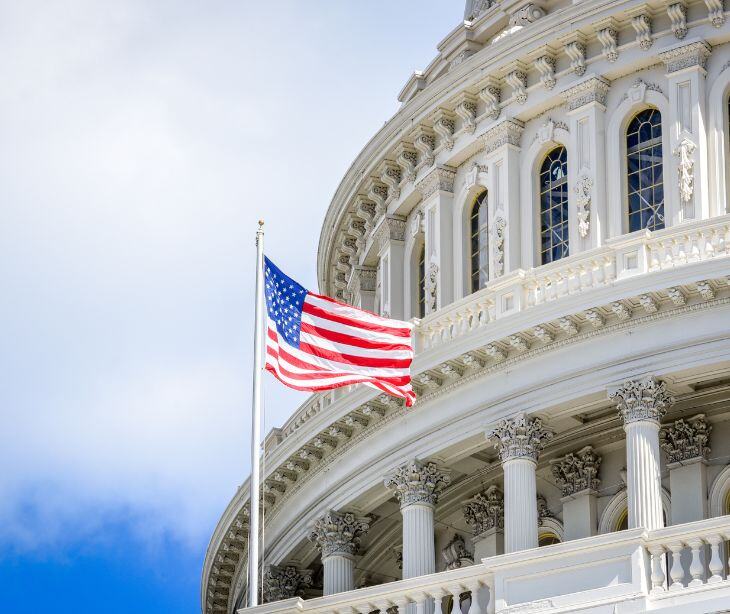5 min read
Understanding the 2025 healthcare price transparency Executive Order
Gugu Ntsele Apr 7, 2025 12:02:00 PM

On February 25, 2025, President Donald Trump signed the Executive Order titled "Making America Healthy Again by Empowering Patients with Clear, Accurate, and Actionable Healthcare Pricing Information." The order builds upon earlier efforts to strengthen healthcare price transparency.
According to President Trump, the healthcare price transparency executive order requires hospitals to show costs in two ways: a user-friendly display of prices for 300 common procedures, and a complete technical file with prices for everything offered. Insurance companies must publicly share what they pay doctors, what they pay out-of-network providers, and their actual prescription drug costs. Insurers also need to create a website tool where members can easily find what services will cost them. These rules aim to end hidden healthcare prices and help patients understand costs before getting care.
The background of healthcare price transparency
Healthcare price transparency has long been a bipartisan policy goal aimed at reducing costs and enabling consumers. The 2025 Executive Order is an expansion of prior efforts to increase the accessibility and usability of pricing information for patients.
Several steps were taken previously, including:
- Executive Order on Enhancing Price and Quality Transparency in American Healthcare (June 24, 2019): The order required hospitals to publicly report standard charges for most or "shoppable" services in an easily accessible format and encouraged insurers to give patients advance estimates of out-of-pocket expenses.
- Hospital Price Transparency Rule (Finalized November 15, 2019): Building on the 2019 order, this rule mandated that hospitals publish payer-specific negotiated rates for standard services starting January 1, 2021, so patients can compare prices.
- Transparency in Coverage Rule (Finalized October 29, 2020): This required most private insurers to begin posting negotiated rates by 2022. Insurers are also required to provide real-time cost-sharing estimates for 500 services by 2023, and all services by 2024.
The Administration's goals and expected outcomes
Strengthening enforcement of existing rules
According to a Fact Sheet provided by the White House, the Executive Order directs the Departments of Treasury, Labor, and Health and Human Services to "rapidly implement and enforce the Trump healthcare price transparency regulations, which were slow walked by the prior administration."
According to the order, these departments will:
- "Ensure hospitals and insurers disclose actual prices, not estimates."
- "Take action to make prices comparable across hospitals and insurers, including prescription drug prices."
- "Update their enforcement policies to ensure hospitals and insurers are in compliance with requirements to make prices transparent."
Economic impact on American families
The Fact Sheet states, "When healthcare prices are hidden, large corporate entities like hospitals and insurance companies benefit at the expense of American patients. Price transparency will lower healthcare prices and help patients and employers get the best deal on healthcare."
The Fact Sheet provides the following evidence to support this approach includes:
- "Prices vary widely from hospital to hospital in the same region. One patient in Wisconsin saved $1,095 by shopping for two tests between two hospitals located within 30 minutes of one another."
- "One economic analysis found that President Trump's original price transparency rules, if fully implemented, could deliver savings of $80 billion for consumers, employers, and insurers by 2025."
- "Employers can lower their healthcare costs by an average of 27% on 500 common services by better shopping for care."
What was said
In the fact sheet, the administration noted that Americans are desiring more transparency. According to the sheet, “95% deem healthcare price transparency an important priority, with six in ten saying it should be a top priority of the government."
Trump stated: "Our goal was to give patients the knowledge they need about the real price of healthcare services. They'll be able to check them, compare them, go to different locations, so they can shop for the highest-quality care at the lowest cost. And this is about high-quality care. You're also looking at that. You're looking at comparisons between talents, which is very important. And then, you're also looking at cost. And, in some cases, you get the best doctor for the lowest cost. That's a good thing."
Provisions of the 2025 Executive Order
Timeline and core requirements
According to JD Supra's analysis, "Under the 2025 Executive Order, the Departments of the Treasury, Labor, and Health and Human Services must implement the following actions by May 26, 2025 in order to enforce the healthcare price transparency regulations." This establishes a 90-day deadline for federal agencies to take action.
The core requirements outlined include:
- "Require the disclosure of the actual prices of items and services – not estimates"
- "Issue updated guidance or proposed regulatory action to ensure standardized and easily comparable pricing information across hospitals and health plans"
- "Issue guidance or proposed regulatory action updating enforcement policies to ensure transparent reporting of complete, accurate, and meaningful data"
Emphasis on standardization and comparability
The Pharmacy Times article titled “Executive Order Advances Price Transparency Efforts to Lower Health Care Costs” notes that a significant provision involves creating standardized formats for price disclosure. As quoted from an interview with Chris O'Dell, senior vice president of market solutions at Turquoise Health: "Why can't we just take the person who writes the book and get them closer to the person who reads the book? That's what I hope price transparency does for drugs—manufacturers make a drug and want to get it to the patient who needs it. But along the way, middlemen demand rebates, discounts, and markups."
Enhanced enforcement mechanisms
A key difference between the 2025 Order and previous initiatives is the explicit emphasis on enforcement. According to the Pharmacy Times article, compliance with previous transparency rules has improved significantly: "And in that period, we went from 0% compliance to 95% or better compliance on the payroll hospital side,” indicating that the new Order includes stronger enforcement provisions to address remaining compliance gaps.
Comprehensive scope of required disclosures
The JD Supra article details that the new Order builds upon previous requirements that mandated:
- "Hospitals to maintain a consumer-friendly display of pricing information for up to 300 shoppable services, as well as a machine-readable file with negotiated rates for every service provided by the hospital"
- "Health plans to post their negotiated rates with providers, including their out-of-network payments to providers, as well as the actual prices that they (or their pharmacy benefit manager) pay for prescription drugs"
- "Health plans to maintain an online tool for consumers to access price information"
The 2025 Order appears to maintain these requirements while adding stronger enforcement mechanisms and standardization provisions.
Consumer protection and empowerment
According to the Pharmacy Times article, a central purpose of the order is to "help patients make more informed decisions about their care through clearer pricing structures so patients can better understand the true cost of their treatments and compare options across different providers. This approach is intended to empower patients, as well as introduce greater competition into the system, encouraging providers and insurers to adopt more patient-friendly pricing models."
Impact on different healthcare stakeholders
According to the Pharmacy Times article, "The shift toward greater transparency is not without its challenges. Although many support lowering healthcare costs, the path to full implementation is complex. Insurers, pharmaceutical companies, and hospitals have historically operated with limited price disclosure, and changing these long-standing practices will require overcoming significant resistance.”
Hospitals and health systems
- Review and potentially update their entire chargemaster
- Negotiate with payers about what information can be disclosed
- Invest in technology infrastructure to maintain and update pricing data
- Train staff to address patient questions about pricing
- Potentially restructure financial operations as price competition increases
Physician groups and outpatient facilities
Independent practices and outpatient facilities face unique challenges:
- Many lack sophisticated pricing systems currently in place
- The administrative burden of compliance may be higher
- Competitive pressure from larger systems with greater resources
- Potential leverage loss in payer negotiations when rates become public
Health insurers
- Significant data management challenges across numerous provider contracts
- Potential exposure of competitive rate information
- Need to develop consumer-facing tools that meet new standards
- Opportunity to demonstrate value through competitive pricing
- Possible market advantage for insurers with already-favorable negotiated rates
Implementation guidance for organizations
JD Supra's article offers practical advice for healthcare organizations preparing for compliance:
- Regular updates: Regularly update the pricing information to reflect any changes in costs, negotiated rates, or service offerings.
- Training and education: Train staff on the requirements of the Executive Orders and how to implement the necessary changes. This should include an understanding of how to use, maintain, and provide consumer-facing disclosures of pricing information.
- Ongoing compliance: Establish systems for ensuring compliance and reporting any issues, which can help identify and address any gaps in the implementation of the Executive Orders.
FAQs
What does the 2025 Healthcare Price Transparency Executive Order aim to achieve?
The Executive Order seeks to increase transparency in healthcare pricing by requiring hospitals, insurers, and healthcare providers to disclose pricing information in clear, standardized formats.
What types of pricing information must be disclosed under the 2025 Executive Order?
Healthcare providers and insurers must disclose actual prices for services, negotiated rates with payers, discounted prices for uninsured individuals, and quality metrics alongside pricing information.
How will this Executive Order affect hospitals and insurers?
Hospitals and insurers are required to publish detailed pricing data, including rates for common procedures, as well as provide personalized cost estimates and real-time cost tools for patients.
What enforcement mechanisms are in place to ensure compliance?
The order introduces stronger enforcement, including increased civil penalties, regular audits, a new Healthcare Price Transparency Office, and compliance ratings made publicly available.
What is the timeline for implementing the 2025 Executive Order?
Federal agencies must issue interim final rules within 90 days.




